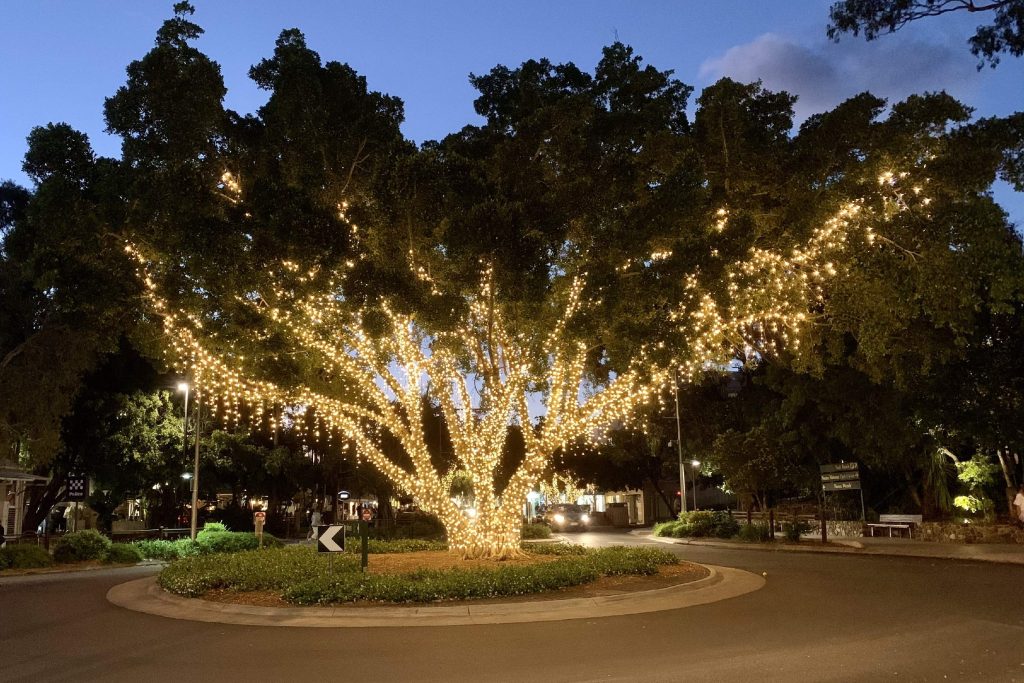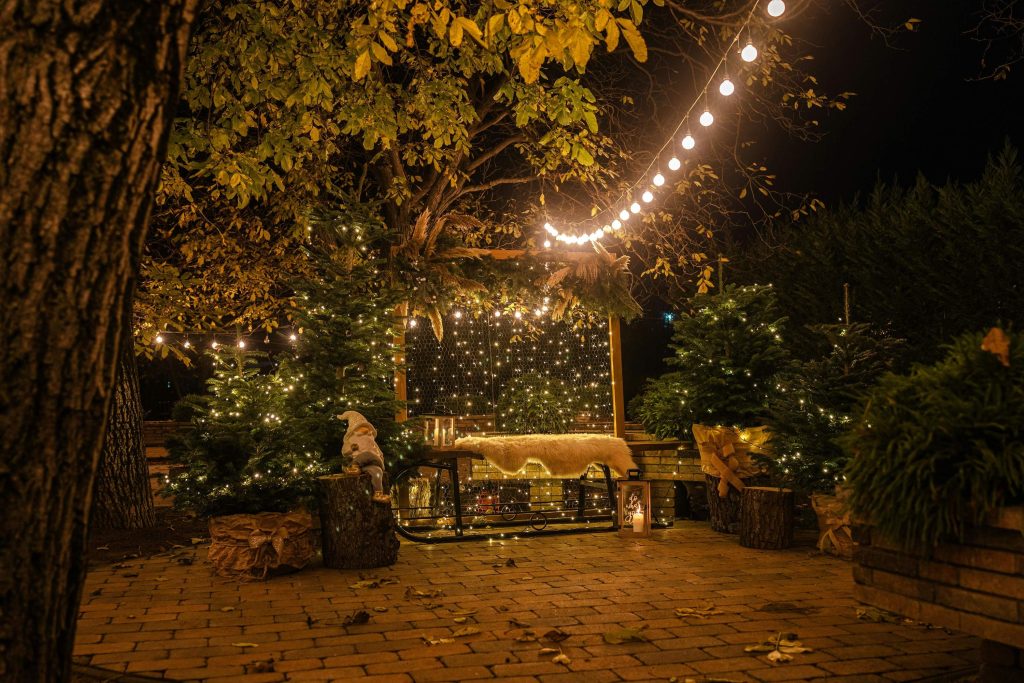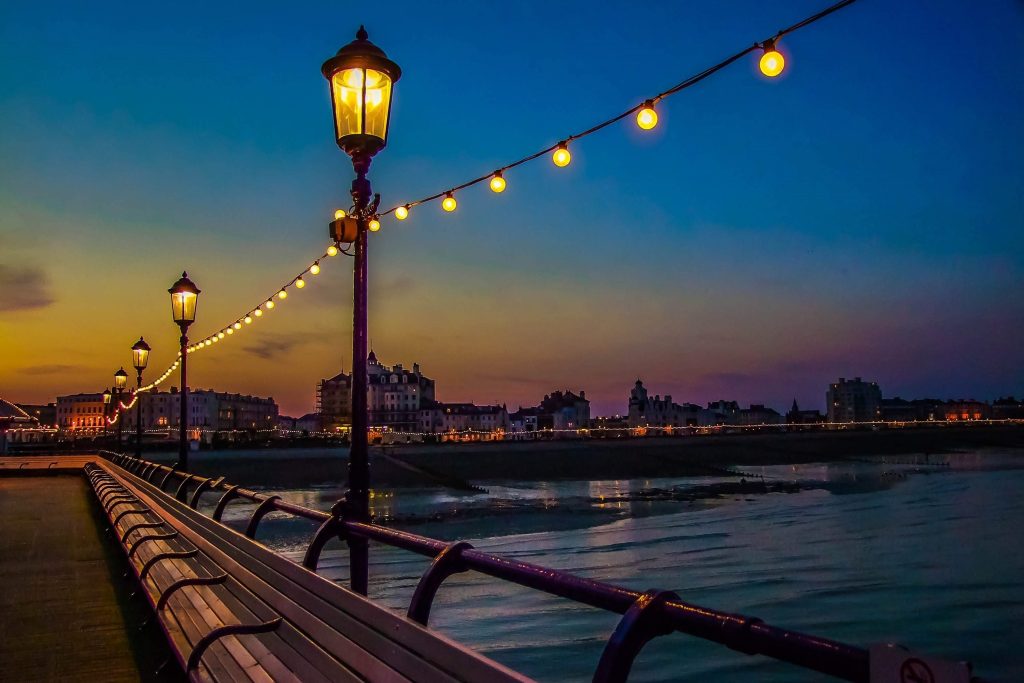LED String Lights Safety: Can They Be Left On Indefinitely?
The Luminous World of LED String Lights
LED string lights, commonly referred to as fairy lights, have ceaselessly gained popularity over the past few decades. Their versatility and aesthetic appeal make them an exciting choice for various lighting applications, both indoors and outdoors.
With an ability to transform ordinary spaces into enchanted scenes straight out of a fairy tale, these strings of tiny, yet powerful, LED bulbs have found extensive use in homes, restaurants, event spaces, and even landscapes.
Landscape string lights are particularly favored due to their dynamic nature. They can be strung around trees, draped along fences or trellises, or simply laid out along pathways to create a breathtaking nightscape. A more specific subtype – landscape lighting – is a creative way to highlight architectural features or specialty garden elements during the night hours.
One of the notable features of LED string lights is their energy efficiency. These luminous strands consume less power compared to traditional incandescent light bulbs while simultaneously providing brilliant illumination.
Furthermore, with modern improvements in technology, they come in various colors and designs that add a touch of magic and warmth wherever they are installed. In addition to their decorative function, LED string lights also serve functional purposes like illuminating dark spots for safety reasons or even acting as directional guides in certain settings such as campgrounds or outdoor events.
The Relevance and Importance of the Topic
The pervasive use of LED string lights raises pertinent questions regarding safety concerns associated with continuous usage. This inquiry stems from two primary factors: first, the traditional advice against leaving any form of lighting on for extended periods owing to potential fire hazards; secondly, the recognized need for constant lighting in certain contexts – security lighting or landscape accents.
This leads us into probing whether it is safe to leave our LED string lights on incessantly. Should one be worried about possible fire risks? Does constant use impact the energy bills significantly? Are there any health implications concerning continuous exposure to LED lighting?
An in-depth exploration of these issues is not only relevant but also vital for every user, potential or current, of LED string lights and landscape lighting. It serves as a tool for informed decision-making and promotes safe usage practices among consumers.
Just like any electrical device, understanding the operational dynamics of LED string lights and landscape lighting is fundamental in maximizing their potential while ensuring safety. This post seeks to demystify these aspects and guide users on best practices when dealing with these luminous beauties.
Therefore, our discourse’s central focus will revolve around the safety implications of leaving LED string lights on continuously. We will delve into the science behind these lights, discuss their advantages and possible risks associated with extended usage, compare their energy efficiency against traditional lighting options, and ultimately provide a comprehensive guide on using LED string lights safely.
Demystifying LED: The New Luminary on the Landscape
The term ‘LED’ stands for ‘light-emitting diodes’, emerging as a revolutionary form of lighting in the last few decades. LEDs are semiconductor devices that produce visible light when an electrical current is passed through them. This process is known as electroluminescence, striking a stark contrast to traditional incandescent bulbs that produce light via heat.
Unlike their incandescent peers, LEDs don’t have a filament that can burn out, leading to an impressively long lifespan. They are also notably more energy-efficient and environmentally friendly, producing more light per watt than incandescent bulbs. This means less energy consumption and lower electricity bills without compromising on brightness or quality of light.

Interestingly, the color of the light emitted by an LED is not determined by the color of the bulb’s casing but rather by the chemical compound used within it. This attribute allows for a multitude of colors and shades achievable with LED technology.
Moreover, they offer increased durability since they are resistant to shock and vibration – a feature highly beneficial for outdoor landscape lighting. The versatility and efficiency of LED lights make them suitable for myriad applications, ranging from tiny indicator lights in electronic devices to large outdoor landscape string lights illuminating our surroundings beautifully after sundown.
Their modest size allows them to be easily adapted into circuit boards or used singularly as small but powerful sources of light. The lack of heat production makes LED lights cool to touch even after prolonged usage, making them safe around children and pets too.
A String Worth More Than Pearls: Different Types of LED String Lights
LED string lights come in numerous forms to accommodate different settings and requirements – each unique design bringing its own charm and utility into play. Some popular types include fairy string lights, rope lights, net lights, and landscape string lights.
Fairy string lights are a popular choice for indoor decoration owing to their delicate and whimsical appearance. They often adorn bedrooms, living rooms, or festive décor to lend an element of magic and mystique.
On the other hand, LED rope lights are encased within a flexible clear tube, allowing them to be wound around objects or spread across vast expanses with ease.
Netted LED lights have been conceived for larger surfaces like walls or hedges. Their evenly spaced layout ensures uniform lighting over considerable space, making them an ideal choice for outdoor parties or public events.
Landscape string lights are specifically designed for outdoor use – lighting up pathways in gardens or creating stunning patio ambiances. Interestingly, some LED string light variants include solar-powered options – harnessing the power of sunlight by day to glow resplendently by night.
With this green energy option, you can beautify your spaces without contributing to energy consumption statistics. Certainly then, among the plethora of choices offered by LED technology, there exists a perfect luminary solution tailored for every unique lighting need.
Lights That Pull Their Weight: The Working of LED String Lights
LEDs operate on a simple yet ingenious principle involving semiconductor diodes. When electric current is passed through these diodes, it activates their electrons, which then emit light as they return to their normal state – a phenomenon technically known as electroluminescence.
In contrast to traditional bulbs that generate light through heat, LEDs create light via the movement of these electrons within the diode’s semiconductor structure. This not only enables them to produce more light per watt but also ensures they remain cool during operation – eliminating several safety concerns associated with traditional lighting sources.
The color produced by an LED is determined by the specific semiconductor material used in it. For example, red light is produced by using aluminum gallium arsenide (AlGaAs), while blue light is produced using zinc selenide (ZnSe). Combining these primary colors can produce a wide array of hues, even white light.
LED string lights simply consist of multiple LEDs linked together on a single circuit. This arrangement allows them to illuminate large areas uniformly and efficiently – making them an excellent choice for both functional and decorative landscape lighting needs.
Their operation is straightforward with no complicated switches or timers – simply plug in to an electrical source and watch your surroundings come alive with their brilliant luminescence. Owing to their low power consumption, they can stay on for extended periods without the risk of overheating or inflated energy bills.
The Safety Aspect of LED String Lights
General Safety Considerations for All Types of Lighting
The safety considerations for any type of lighting, including landscape string lights, begin with their installation. It is imperative to ensure that the electrical wiring is correctly done to avoid short circuits and potential fire hazards. A professional electrician can confirm that all connections are secure and the correct voltage is in use.

Lighting fixtures should also be adequately insulated to protect them from environmental factors such as rainfall or fluctuating temperatures; this is especially pertinent for outdoor landscape lighting. It’s also crucial to place lights away from flammable materials and to consider the fixture’s heat emission.
Maintenance routines are an additional safety consideration. Regular checks help identify any potential issues, including loose connections, worn-out wires, or bulbs on the brink of burning out. Switching off lights when not necessary can also elongate their lifespan while conserving energy.
Selecting high-quality lighting products from reputable manufacturers adds an extra layer of safety assurance. Quality products tend to have superior design and construction that adheres better to safety standards.
Low Heat Emission: The Cool Advantage
One of the distinct safety features intrinsic to LED string lights – be it for indoor or landscape lighting – is their low heat emission. Unlike conventional light sources such as incandescent or halogen lamps, which convert over 90% of energy into heat, LEDs are much cooler as they convert most energy into light.
This significantly minimizes the risk associated with overheating, such as burns upon contact or ignition of nearby flammable materials – a significant concern in densely decorated areas like Christmas trees or covered patios adorned with landscape string lights.
Additionally, LEDs provide greater flexibility in terms of placement options because they do not contribute significantly towards ambient temperature increase. This makes them ideal even in temperature-sensitive environments like greenhouses or art galleries housing heat-sensitive artifacts.
Avoiding Harmful Elements: The Mercury-Free Solution
Another safety advantage of LED lights is their mercury-free composition. Older lighting technology such as fluorescents and compact fluorescent lamps (CFLs) contain small amounts of mercury – a toxic element that poses health risks upon exposure, especially during disposal or if the bulb breaks.
LEDs, however, do not contain any harmful substances. This makes them safer to handle and significantly reduces environmental harm in case of breakage or at the end of their life cycle when they are discarded. It also absolves users from specific disposal protocols required for mercury-containing lights, simplifying the recycling process.
Shock Resistance: A Robust Construction
LED string lights also prove their safety mettle through their shock resistance. LED bulbs are solid-state devices without fragile filaments or glass enclosures that are common in traditional bulbs. Their sturdy construction makes them more resistant to impacts or vibrations – an attribute particularly handy for landscape lighting subject to wind, rainfall, or human activity.
This shock resistance augments safety by reducing instances of breakage leading to potential injury from glass shards or release of harmful substances, as previously discussed. It also enhances durability and reduces replacement costs over time due to fewer breakages. From installation considerations through usage to disposal, LED string lights offer several unique features that contribute to a safer lighting experience compared with conventional options.
Advantages and Drawbacks of Continuous Use of LED String Lighting
Unveiling the Benefits of Continuous LED String Light Use
Convenience: The Invisible Advantage
The foremost benefit of leaving landscape string lights on continuously is the unquestionable convenience it offers. The need to manually switch them on or off every time is eliminated, thus freeing up your time and mind for other matters.

This advantage might seem negligible in isolation, but compound this over an extended period, and the saved effort becomes substantial. Furthermore, this continuous operation ensures that your beautifully lit landscape remains so throughout the night, ready to impress any impromptu guests or late-night passersby.
The Luminous Guard: LED Lights for Security
Another compelling reason to keep your LED lights on is the added security they provide. Dark areas are a potential invitation to unwanted intruders; hence, a brightly lit landscape acts as a deterrent against such occurrences.
Continuous lighting with LED string lights not only enhances your property’s aesthetic appeal but also its safety quotient. With these efficient bulbs illuminating your surroundings non-stop, you are essentially employing a silent sentinel that stands guard while you rest.
Understanding the Risks: The Flip Side of Keeping LED Lights On
Fire Hazard: A Minuscule Yet Valuable Consideration
One of the risks associated with leaving LED string lights on continuously is that of potential fire hazards. Despite their low heat emission characteristics, LED lights can still generate some heat when left operating for extended durations.
Although minimal, this subtle heat buildup could pose a risk if there were flammable materials in close proximity to these landscape lighting fixtures. However, given such instances are rare due to LEDs’ inherent design benefits that focus on reducing heat output, this risk remains quite marginal.
The Energy Consumption Conundrum
Leaving an electronic device running continually will certainly lead to increased energy consumption, and LED string lights are no exception. While it is true that LEDs are significantly more energy efficient than their incandescent or fluorescent counterparts, they nonetheless consume power.
An array of LED string lights left on throughout the night could lead to a noticeable surge in your energy bill over time. Therefore, while LEDs undeniably offer economic advantages in terms of power usage and longevity, these benefits ought to be balanced against the potential hike in energy consumption if left on incessantly.
Energy Efficiency and Cost Implications
LEDs versus Traditional Lighting: A Battle of Energy Efficiency
LED string lights, especially those utilized in landscape lighting, have a clear advantage over traditional incandescent or halogen bulbs when it comes to energy efficiency. These modern marvels are designed to convert nearly 90% of their energy into light, whereas an incandescent bulb only manages a pitiful 10%, with the rest being wasted as heat. This inherent efficiency allows LED lights to provide more illumination for less power.
The True Cost of Lighting – LED vs Traditional Lights
Over time, the cost implications become even more apparent. The lower energy consumption of LED string lights translates directly into reduced utility bills – a saving that can be quite significant over the long term.
Furthermore, LEDs boast an impressive lifespan. While an incandescent bulb may fizzle out after just 1,000 hours of use, a quality LED can shine bright for up to 50,000 hours. This longevity further offsets any initial cost difference between LEDs and traditional bulbs.
Best Practices for Using LED String Lights Safely
Installation: The First Step Towards Safe Lighting
Proper installation is crucial in ensuring the safe use of landscape string lights. Always follow manufacturer instructions and ensure that lights are securely fastened in place to prevent falling or tangling hazards. If you’re not confident about installing them yourself, consider hiring a professional electrician to ensure safety.
The Goldilocks Zone – Finding the Right Duration for Use
While LED string lights are energy-efficient and safe for extended usage, it’s best not to leave them on indefinitely. Not only does this help save on electricity costs but also extends the lifespan of your LEDs by reducing wear on components.
Maintaining Your Landscape Lighting: Prolonging the Lifespan
Routine maintenance of your LED string lights can prolong their lifespan significantly. Regularly inspect them for any signs of damage, clean off any dirt or debris that could affect their efficiency, and replace any failed bulbs immediately to prevent strain on the rest of the circuit.
Case Studies & Real-Life Scenarios
When LEDs Shone Brightly: Beneficial Instances
There have been several instances where leaving LED string lights on has proven beneficial. For example, they have been used effectively as a low-cost, energy-efficient security measure to deter trespassers in residential and commercial properties alike.
Rare Adverse Effect: When LEDs Caused Complications
However, it’s not always smooth sailing. There have been rare cases where faulty LEDs or improper installation have led to complications such as electrical malfunctions or even fires – highlighting the importance of proper usage and maintenance.
Conclusion: Is It Safe to Leave LED String Lights On?
Overall, it’s clear that while there are occasional hiccups, overall LED string lights present a safe and efficient choice for landscape lighting. Their remarkable energy efficiency coupled with an impressive lifespan makes them a cost-effective lighting option. With proper installation, judicious use, and regular maintenance, yes – it is safe to leave your LED string lights on. And in doing so, you will not only enhance the aesthetics of your outdoor spaces but also contribute towards an environmentally responsible future.
You may also be interested in the following posts:
